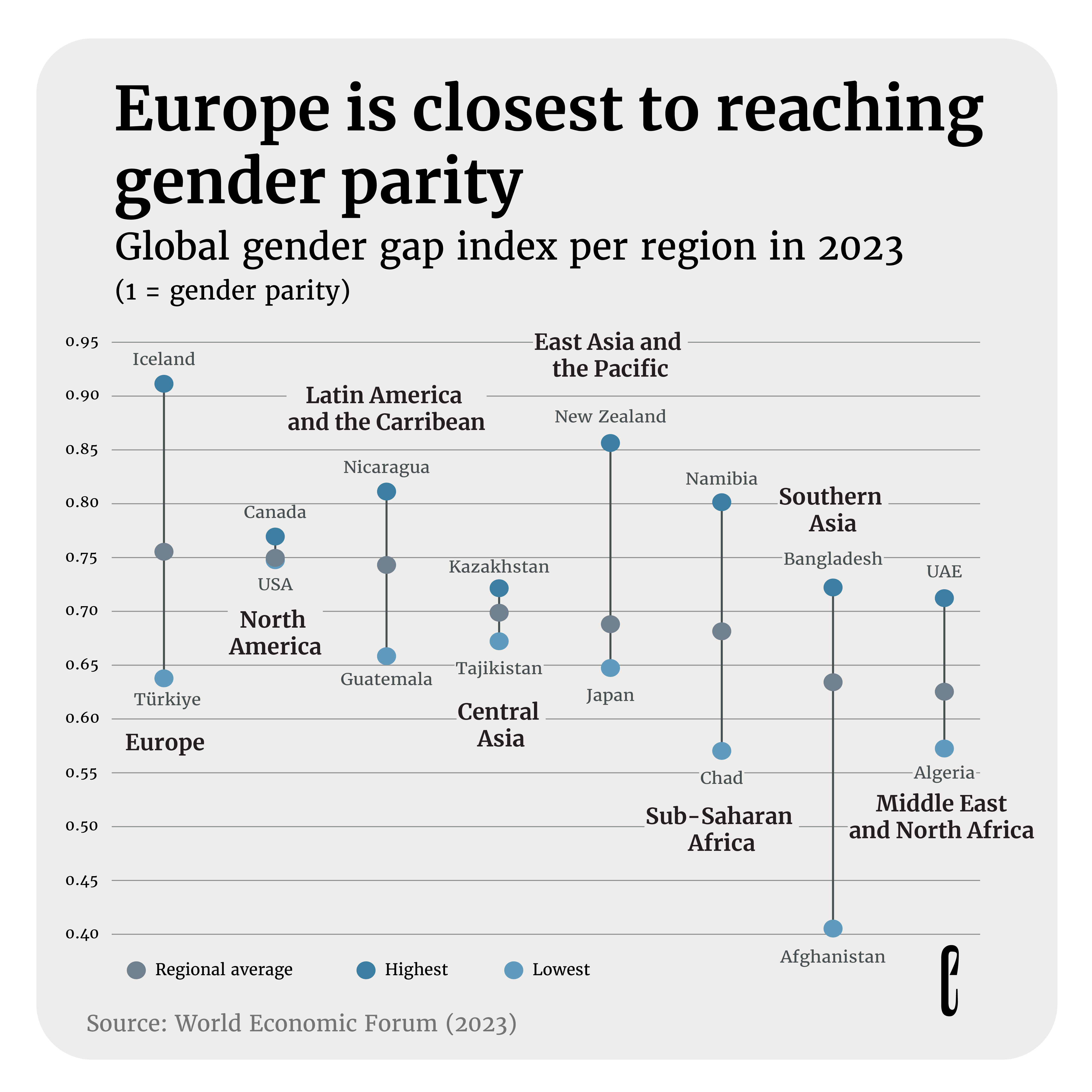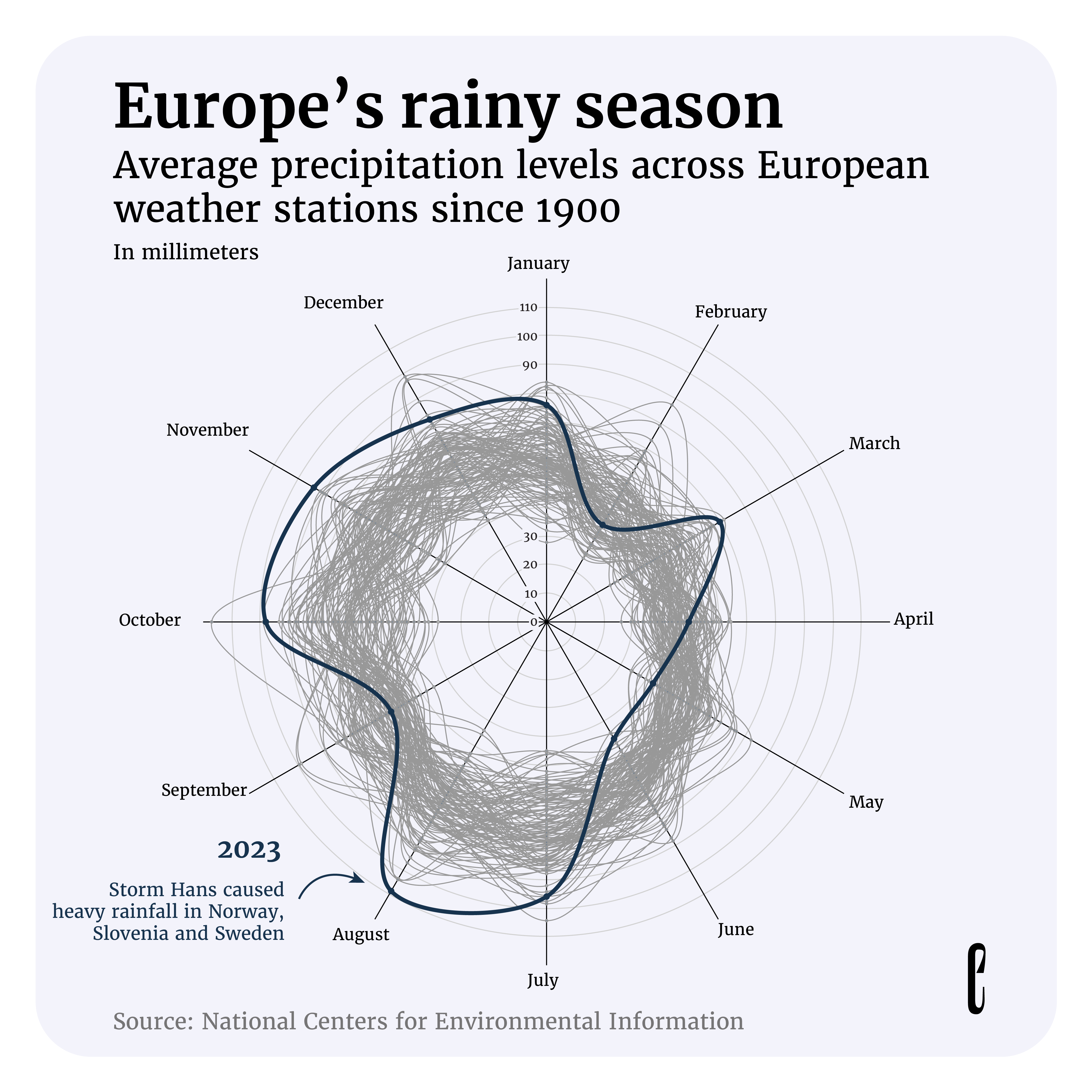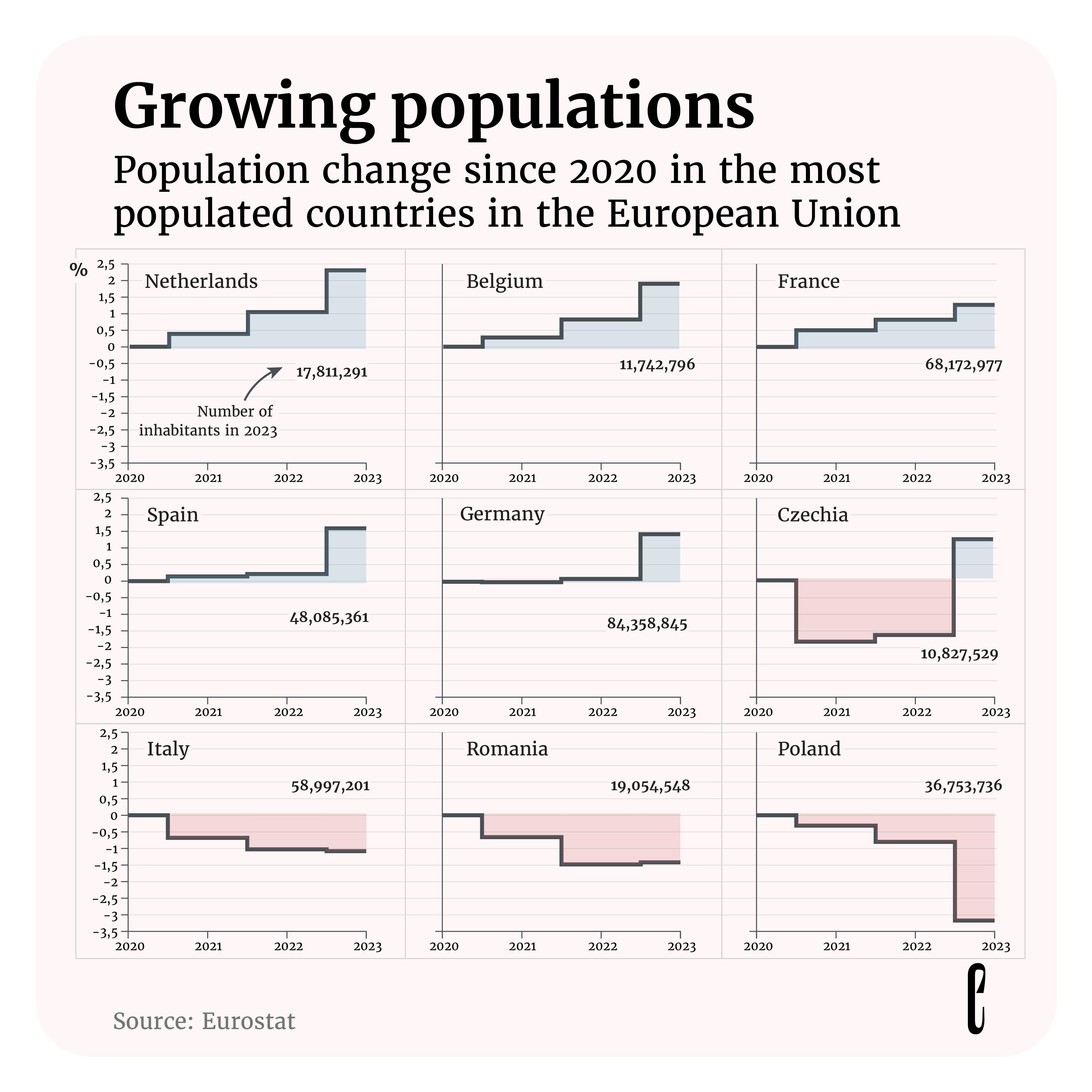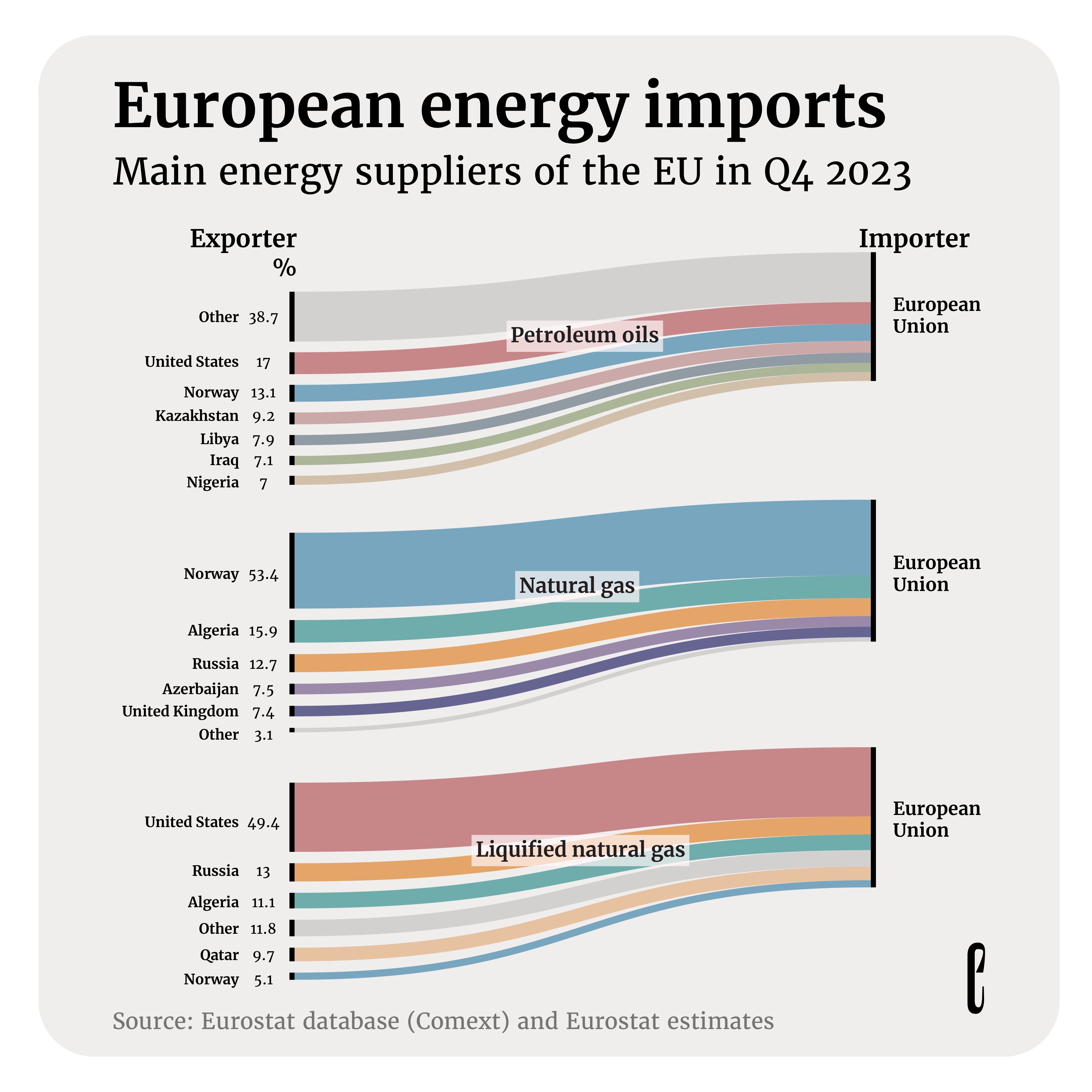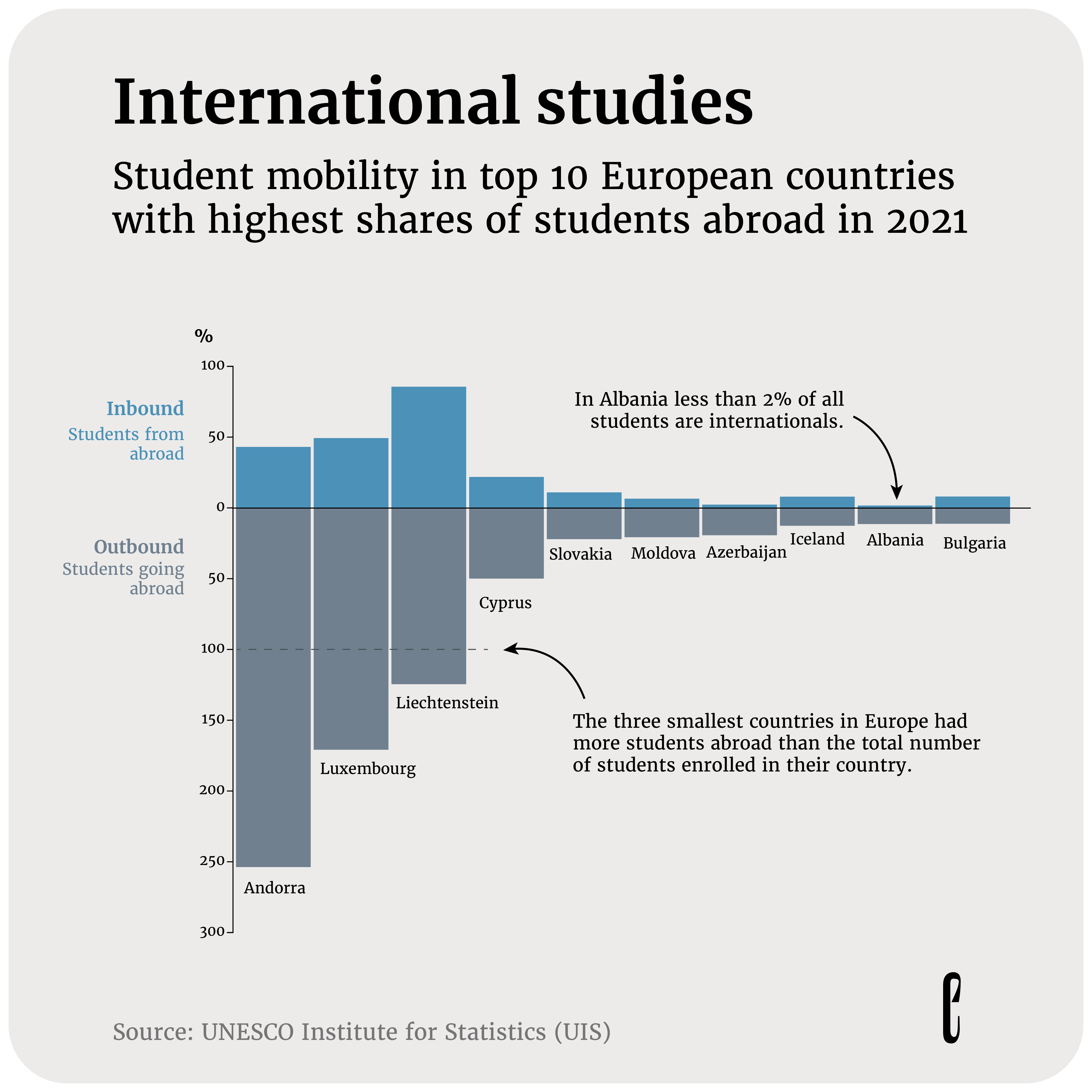The European Correspondent, March 2024
March 8, 2024
International Women’s Day calls for an assessment of gender equality around the world. The 2023 results for the global gender gap index, which assesses gender parity in economic participation and opportunity, education, health and survival, and political empowerment, reveal that no country has yet attained parity. However, Europe is closest to reaching that goal, with Iceland in the lead.
Data source: World Economic Forum
March 14, 2024
Summer 2023 was marked by a series of extreme weather events across Europe, including heat waves and storms. Rainfall levels were particularly high in northern Europe in July and August, with a storm affecting several countries, including Slovenia, Norway, and Sweden. Other parts of Europe also experienced torrential rains and flooding, such as Croatia, Germany, and Austria.
Data source: National Centers for Environmental Information
March 24, 2024
The European population is experiencing overall growth, driven by various factors unique to each country but united by the challenge of aging demographics. Although population growth stagnated in 2020 and 2021 due to the COVID-19 pandemic's impact, many countries have witnessed an increase since 2022. This resurgence is partly due to increased immigration rates, particularly driven by Ukrainian refugees seeking resettlement in European nations like Germany and Czechia.
Data source: Eurostat
March 27, 2024
Energy imports into the European Union have reduced in both value and volume. This is in part heightened by the EU reduction plan that set a 15% reduction goal in gas consumption from August 2022. However, the EU still relies on many countries for its energy. While petroleum oils originate from different countries, more than half of natural gas imports come from Norway, while the United States is the prime importer of liquified natural gas (LNG).
Data source: Eurostat
March 31, 2024
Europe has been a fervent promoter of international student mobility, as demonstrated by the popular Erasmus student exchange program. While the smallest countries in Europe see most of their students enrolling elsewhere, high outbound ratios of students are detected in central and eastern European countries. This is the case for Cyprus, with nearly half of its student population studying abroad.
Data source: UNESCO Institute for Statistics
